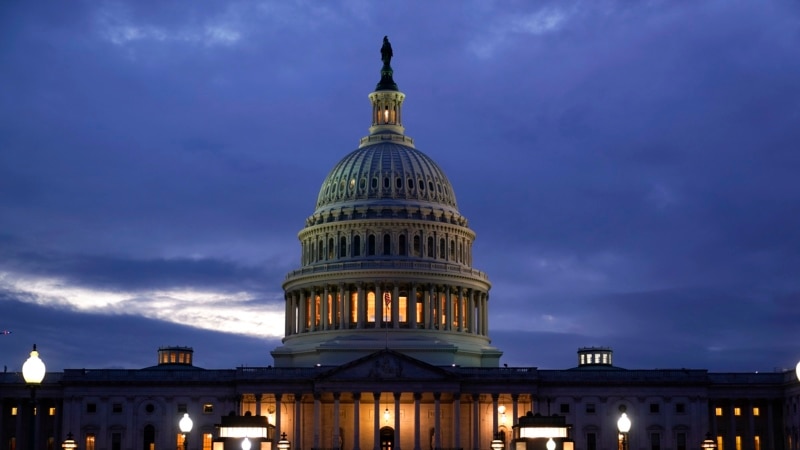The Biden Administration warns that unless Congress takes action, the federal government may not be able to pay its bills by June.
This week, the US Treasury Department announced that it would take “extraordinary measures” to avoid hitting the debt ceiling and continue financing the government until early June. But those temporary moves only delay the standoff over the nation’s financial responsibilities between President Joe Biden and a divided-party-ruled Congress.
What is the debt ceiling?
Every year since 2001, the US government has spent more than the revenue it generates through taxes and fees. The government borrows money to fill the funding gap so it can continue to pay for a variety of federal programs and agencies, from the military to Social Security to Medicare for retirees. The government raises this money by selling interest-bearing securities, such as Treasury bonds.
The debt limit, or debt ceiling, is a federal law that limits the amount of money the United States can borrow to meet these legal spending obligations.
Contrary to some public perceptions, raising the debt ceiling does not authorize the government to spend more money. Congress has ultimate authority over the budget process, and each year lawmakers vote on spending bills. But since 1917, a legal limit has also been placed on the total amount of debt the US government can take on. Raising the debt limit simply authorizes the Treasury Department to make payments on spending that Congress has already approved.
The United States has increased the debt ceiling 78 times since 1960, according to the Treasury Department. Congress votes to raise the debt ceiling separately from votes on government spending or taxes.
Many Republican lawmakers argue that the government spends too much money. Some suggest refusing to increase the debt limit as a way to control spending.
But some economists warn that the first non-payment of interest on the US national debt of $31.4 trillion would trigger far-reaching global consequences, including a downgrade of the US credit rating and a devaluation of the US dollar that It could possibly lead to a market crash on the stock market and an economic downturn.
What are “extraordinary measures”?
The US Treasury can temporarily postpone reaching the debt ceiling through creative accounting measures. These can include moving debt between government agencies as payments come due, suspending investment in buying and selling foreign currency, and temporarily halting investment in pension plans for government workers.
It is not clear how long they will buy all these shares. In a January 13 letter to the US Congress, Treasury Secretary Janet Yellen, wrote: “cash and extraordinary measures are unlikely to run out before early June.”
At some point, the US will have to resolve the impasse by either raising the debt ceiling or massively cutting its obligations. For the vast majority of lawmakers, both Democrats and Republicans, it would be unthinkable to stop funding the military or cut Social Security payments to retirees.
What do Democrats and Republicans propose?
Biden and the Democrats, who have a slim majority in the Senate, want to raise the debt ceiling as has often been done with little to no debate in recent decades.
But in 2011, as the United States neared the breach of the debt ceiling, the Republican-majority House of Representatives asked then-President Barack Obama for a series of spending cuts in exchange for raising the debt limit. Two days before the Treasury Department estimated the cap would be exhausted, Republicans agreed to the increase in exchange for a package of future spending cuts.
Despite avoiding a fiscal catastrophe, the United States’ long-term credit rating was downgraded slightly in 2011, due in part to Washington’s brinkmanship of the debt ceiling. Economists fear that the current standoff could trigger another downgrade.
The kind of agreement reached in 2011 may no longer be possible today. White House press secretary Karine Jean-Pierre told reporters last week: “We will not do any negotiations.”
In a joint statement, Senate Majority Leader Chuck Schumer and House Democratic Leader Hakeem Jeffries said: “A bankruptcy forced by extreme MAGA Republicans [alude a la facción seguidora del expresidente Donald Trump] It could plunge the country into a deep recession and result in even higher costs for America’s working families in everything from mortgages and car costs to borrowing at credit card interest rates.”
What do Republicans in Congress want?
Republicans argue that raising the debt ceiling is financially irresponsible and that the US should instead cut unnecessary spending to reduce its debt.
“We have to get our house in order,” House Speaker Kevin McCarthy told reporters last week. “Republicans, we will always protect Medicare and Social Security. We will protect that for the next generation in the future. But let’s examine every dollar spent. It is the right of a hard-working taxpayer.”
In a weekly conference meeting, House Republican leaders reportedly told members they would not agree to raising the debt ceiling without tax reforms, including a spending cap from fiscal 2024 to 2022 levels and balancing the US budget within the next 10 years.
However, a bipartisan compromise is necessary because any legislation passed in the Republican-majority House of Representatives must also pass in the Democratic-majority Senate and be signed into law by President Joe Biden.
The United States raised the debt ceiling three times while Republican President Donald Trump was in office. Republicans controlled the Senate for the entirety of his administration and the House of Representatives for his first two years in office.
Connect with the Voice of America! Subscribe to our channel Youtube and activate notifications, or follow us on social networks: Facebook, Twitter and instagram.



![[Img #74664]](https://thelatestnews.world/wp-content/uploads/2024/12/James-Watson-The-controversial-genius-behind-the-double-helix-150x150.jpg)









